Surfing is not just a sport or a leisure activity; it’s a passion, a lifestyle, and, for many, a profound expression of personal freedom and connection with nature.
At the heart of this thrilling interaction between surfer and wave is the surfboard—a piece of equipment that has undergone remarkable evolution over centuries.
The surfboard tail shape is central to its design and often overlooked by novices. It is a critical element that significantly influences a board’s performance in the water.
This comprehensive guide will dive into the intricacies of surfboard tail shapes, explaining their differences, benefits, and which waves they’re best suited for.
Contrary to popular belief, the design of a surfboard extends far beyond mere aesthetics. The shape, size, and even the tail design of a surfboard play pivotal roles in determining its speed, maneuverability, hold, and overall performance in various wave conditions.
While many surfboard tail shapes can perform admirably across a wide range of conditions, certain designs are optimized for specific wave types, offering surfers the opportunity to enhance the functionality of their boards for their preferred surfing style.
Whether you’re like David, craving down-the-line speed, or leaning towards high-performance surfing with sharp turns and fluid transitions, understanding surfboard tail shapes can significantly elevate your surfing experience.
Contents
- 1 The Humble Beginnings
- 2 Six Basic Surfboard Tail Shapes
- 3 Conclusion:
- 4 FAQs
- 4.1 1. Why do surfboard tail shapes matter?
- 4.2 2. What is the best tail shape for big waves?
- 4.3 3. Can one surfboard tail shape work in all types of waves?
- 4.4 4. What makes the swallow tail different from other tail shapes?
- 4.5 5. Is the rounded pintail suitable for beginners?
- 4.6 6. What tail shape do professional surfers prefer?
The Humble Beginnings
Surfing’s origins trace back to ancient Polynesia, where the first surfboards were simple, rectangular pieces of wood. These rudimentary designs slowly evolved, shaped by centuries of experience, a scientific understanding of fluid dynamics, and a profound connection with the ocean and waves.
Today, surfboards come in an array of shapes and sizes, each tailored to meet the specific needs of surfers and the diverse conditions of the waves they seek to conquer.
The Evolution of Tail Shapes
Surfboard tail shapes have evolved significantly, branching into various designs, each offering unique benefits.
While many variations exist, six primary tail shapes dominate modern surfboards: pintail, rounded pintail, round tail, squash (or rounded square) tail, swallow tail, and square tail.
The design of each tail shape influences the board’s performance, affecting speed, control, and maneuverability in distinct ways.
Six Basic Surfboard Tail Shapes
Pintail
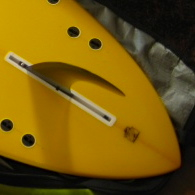
Ideal for controlling speed in large, powerful waves, the pintail shape is designed for better wave hold and control. Its reduced surface area at the tail minimizes lift, maintaining direction and momentum—a crucial feature for surfing in locations known for their formidable waves.
Rounded Pintail
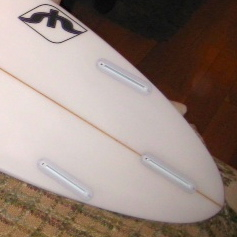
A variation of the standard pintail, the rounded pintail offers greater versatility without sacrificing the control and speed needed in big waves. Its smoother bottom allows it to perform well in a broader range of surf conditions.
Round Tail
The round tail shape provides a broader, more circular edge, enhancing maneuverability and versatility. This shape excels in steeper, quality waves, offering an excellent balance between lift and control.
Squash Tail or Rounded Square Tail
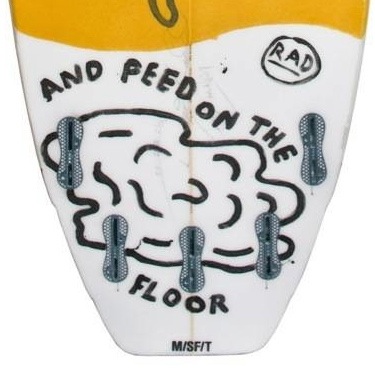
Favored for modern performance surfing, the squash tail’s design offers improved turn management while maintaining speed. This tail shape is trendy among professional surfers for its versatility and performance in various wave conditions.
Square Tail
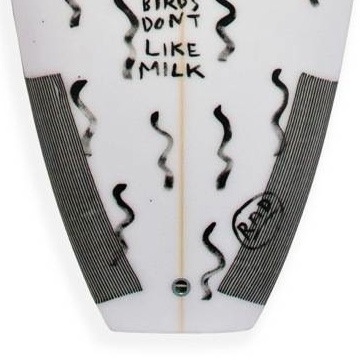
Less common than other shapes, the square tail is designed with sharp corners for precise pivot points, ideal for tight turns and maneuvers. Although not as versatile as other shapes, it excels in specific conditions, particularly when executing airs.
Swallow Tail
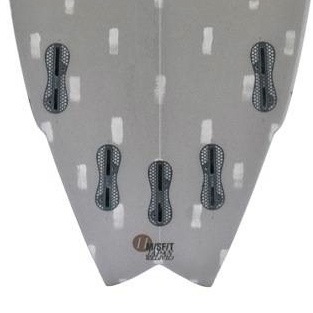
The swallow tail combines increased surface area with a distinctive cutout, offering enhanced control and maneuverability. This versatile design is suitable for surfboards of all shapes and sizes, adapting well to both small and large waves.
Conclusion:
Selecting a surfboard with the appropriate tail shape can significantly impact your surfing experience. When shopping for a surfboard, consider the types of waves you intend to ride most frequently.
Each tail shape offers unique advantages for different wave conditions, and understanding these can help you choose a board that aligns with your surfing style and goals.
Next time you visit a surf shop or browse online, consider the tail shapes available. Whether you’re chasing giant waves in exotic locations or perfecting your turns in local surf, there’s a surfboard tail shape designed to elevate your performance on the water.
Remember, the right choice can be the difference between a good surfing session and an unforgettable one.
FAQs
1. Why do surfboard tail shapes matter?
Tail shapes significantly influence a surfboard’s performance, affecting its speed, maneuverability, hold, and how it responds in different wave conditions. Each tail shape is designed to offer specific advantages, making some shapes better suited for certain styles of surfing or wave types than others.
2. What is the best tail shape for big waves?
The pintail shape is considered the best option for big, powerful waves. Its design allows for better control and hold, enabling surfers to maintain speed and direction in challenging conditions. Pintails minimize lift at the tail, which is crucial for navigating large waves.
3. Can one surfboard tail shape work in all types of waves?
While no single tail shape is perfect for all conditions, some designs offer greater versatility. The squash tail or rounded square tail, for example, is highly popular among surfers because it performs well across a variety of wave types and offers a good balance between speed, maneuverability, and control.
4. What makes the swallow tail different from other tail shapes?
The swallowtail is unique due to its increased surface area and distinctive cutout, which enhances control and maneuverability. This shape allows for more bite in turns and is versatile enough to be featured on surfboards of all shapes and sizes, suitable for both small and large waves.
5. Is the rounded pintail suitable for beginners?
The rounded pintail is more versatile than its pintail counterpart, making it a suitable option for surfers who encounter a range of wave sizes. However, beginners might find wider-tailed shapes like the squash tail more forgiving and stable, especially in smaller waves.
6. What tail shape do professional surfers prefer?
Many professional surfers prefer the squash tail or rounded square tail for its versatility and performance in a wide range of wave conditions. This shape allows for quick, sharp turns while maintaining speed, making it ideal for competitive surfing and high-performance maneuvers.








